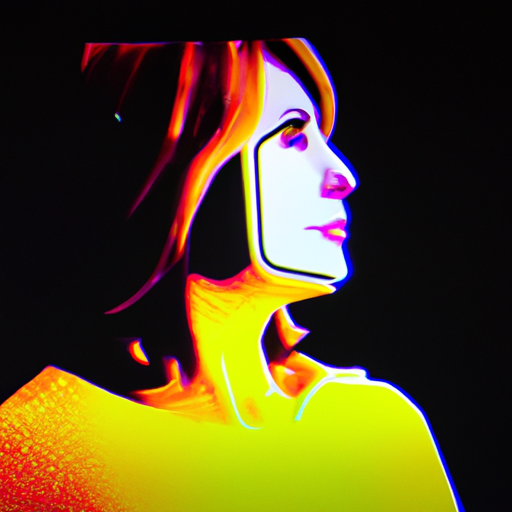-
Table of Contents
- Designing for Wearable Technology: Graphics on the Go
- The Importance of Graphics in Wearable Technology
- Best Practices for Designing Graphics for Wearable Technology
- 1. Keep it Simple
- 2. Use Color and Contrast Wisely
- 3. Prioritize Information Hierarchy
- 4. Optimize for Different Screen Sizes
- 5. Incorporate User Feedback
- Case Studies: Successful Graphics in Wearable Technology
- 1. Apple Watch
- 2. Fitbit
- Conclusion
Designing for Wearable Technology: Graphics on the Go
Wearable technology has become increasingly popular in recent years, with devices like smartwatches, fitness trackers, and augmented reality glasses becoming more prevalent in our daily lives. As these devices continue to evolve and become more sophisticated, the role of graphics in their design becomes even more crucial. In this article, we will explore the importance of designing graphics for wearable technology and discuss some best practices and considerations for creating visually appealing and functional user interfaces.
The Importance of Graphics in Wearable Technology
Graphics play a vital role in the user experience of wearable technology. Unlike traditional devices like smartphones or computers, wearable devices have limited screen real estate and are often used in quick, on-the-go situations. Therefore, the graphics on these devices need to be concise, easily understandable, and visually appealing to provide users with the necessary information at a glance.
One of the primary functions of graphics in wearable technology is to convey information quickly and efficiently. For example, a fitness tracker may use simple icons and visual cues to display the user’s heart rate, steps taken, and calories burned. These graphics need to be clear and easy to interpret, allowing users to understand their health and fitness data without having to spend too much time analyzing complex numbers or text.
Another important aspect of graphics in wearable technology is their ability to enhance the overall user experience. Wearable devices are often worn on the body, making them highly personal and intimate. Therefore, the graphics on these devices should be visually appealing and customizable to reflect the user’s individual style and preferences. By incorporating visually pleasing graphics, wearable devices can create a more engaging and enjoyable user experience.
Best Practices for Designing Graphics for Wearable Technology
When designing graphics for wearable technology, there are several best practices and considerations to keep in mind. Let’s explore some of these below:
1. Keep it Simple
Due to the limited screen size of wearable devices, it is essential to keep the graphics simple and uncluttered. Avoid using excessive text or complex visuals that may overwhelm the user. Instead, focus on using clear and concise icons, symbols, and visual cues to convey information effectively.
2. Use Color and Contrast Wisely
Color and contrast play a crucial role in the legibility and visibility of graphics on wearable devices. Choose colors that are easily distinguishable and provide enough contrast to ensure readability, especially in different lighting conditions. Consider the device’s display capabilities and adjust the color palette accordingly.
3. Prioritize Information Hierarchy
When designing graphics for wearable technology, it is important to prioritize the information hierarchy. Determine the most critical information that users need to see at a glance and make it prominent. Use size, color, and placement to differentiate between different levels of information and guide the user’s attention effectively.
4. Optimize for Different Screen Sizes
Wearable devices come in various shapes and sizes, from small smartwatches to larger augmented reality glasses. Design graphics that can adapt and scale seamlessly across different screen sizes to ensure a consistent user experience. Consider how the graphics will appear on different devices and test them thoroughly to ensure they are legible and visually appealing.
5. Incorporate User Feedback
Wearable devices often have limited input options, such as touchscreens or voice commands. Therefore, it is crucial to incorporate user feedback into the design of graphics. Provide visual cues or animations to indicate when a user’s input has been registered or when an action is being performed. This feedback helps users understand the device’s response and enhances the overall user experience.
Case Studies: Successful Graphics in Wearable Technology
Let’s take a look at some real-world examples of successful graphics in wearable technology:
1. Apple Watch
The Apple Watch is a prime example of effective graphic design in wearable technology. Its user interface utilizes simple and intuitive icons, making it easy for users to navigate and understand the device’s features. The use of color and contrast is also well-executed, ensuring legibility in various lighting conditions. Additionally, the ability to customize watch faces allows users to personalize their device and make it visually appealing.
2. Fitbit
Fitbit, a popular fitness tracker brand, incorporates visually appealing graphics to motivate and engage users. The device displays progress towards fitness goals using simple and colorful visuals, such as progress bars and achievement badges. These graphics not only provide users with valuable information but also create a sense of accomplishment and encourage continued use of the device.
Conclusion
Designing graphics for wearable technology requires careful consideration of the device’s limitations and user needs. By keeping the graphics simple, using color and contrast wisely, prioritizing information hierarchy, optimizing for different screen sizes, and incorporating user feedback, designers can create visually appealing and functional user interfaces for wearable devices. Successful examples like the Apple Watch and Fitbit demonstrate the importance of effective graphic design in enhancing the overall user experience of wearable technology. As wearable technology continues to evolve, designers must stay up-to-date with the latest trends and best practices to create compelling and user-friendly graphics on the go.
